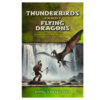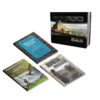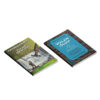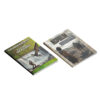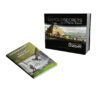No products in the cart.
Return To ShopKangaroos: How Did They Make It All the Way to Australia from Where the Ark Landed?
Surprisingly, one of the most frequently asked questions from skeptics goes something like this: “If the Ark landed on the Mountains of Ararat, how did kangaroos make it all the way to Australia (an island without present land bridges), a distance of about 7,000 miles?” Sometimes “without leaving any fossils” will be added to the question as an apparent “zinger.” While many skeptics believe this is the “unanswerable” question for biblical creationists, the answer highlights evidence that supports biblical creation (the Babel dispersion and the Ice Age that followed the Flood).
To get the kangaroos—and humans for that matter—from where the Ark landed (the mountains of Ararat, Genesis 8:4) to Australia (a present island), two things need to happen: (1) they need to travel over 7,000 miles, and (2) they need to cross an area that is currently under water. Answering the first part is easy. Kangaroos are made for traveling long distances. Kangaroos can travel about 15 miles-per-hour over long distances.[i] Assuming they traveled at only one-half of this pace (7–8 miles-per-hour) and only traveled for 8–10 hours per day, they could migrate from the Middle East to Australia in just four months. However, given the unknown terrain and because it’s unlikely they traveled straight to Australia after exiting the Ark, it probably took them several years and multiple generations (same with humans after Babel).
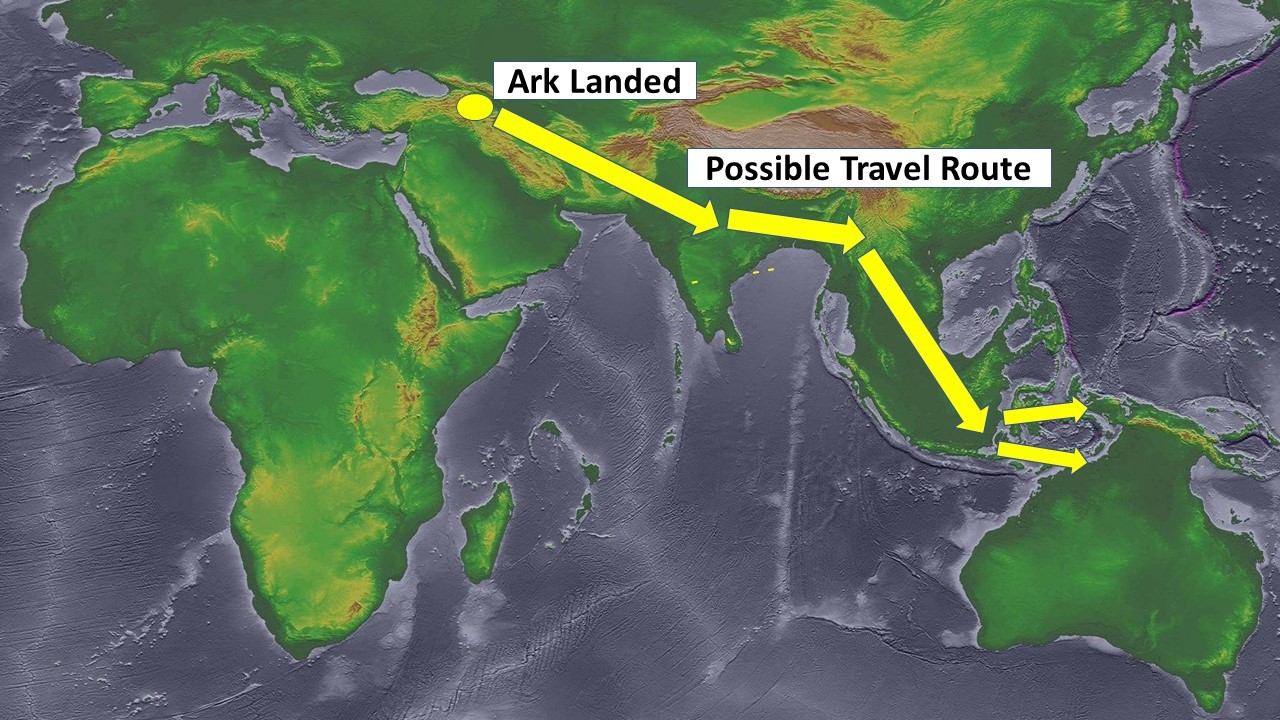
Figure 1. Map showing Lowered Sea Levels During the Ice Age and Possible Travel Route for Kangaroos.[ii]
Next there’s the challenge of crossing the southern-most part of what’s currently Indonesia (Sunda) to Northern Australia (Sahul) (see Figure 2). Two possible answers explain this, and the second may have more legs than the first. The first possibility is that the lower sea levels during the Ice Age (Glacial Maximum) exposed a land bridge all the way from the southern parts of Indonesia to Northern Australia. With the present location of the land masses, this is unlikely because lower sea levels alone would still leave some sections uncrossable. Even though the sea levels during the Glacial Maximum were 100+ meters lower than current levels (with some estimates even much lower[iii]), some deeper channel areas would have prevented crossing on dry land.
Looking at Figure 2, New Guinea, Australia, and Tasmania were in fact connected during the Ice Age (as a giant island known as Sahul).[iv] However, Sahul was probably not completely connected to the Sunda region of Southeastern Asia. After all, the two regions also have different fauna and flora.[v] While much of the now submerged area between Sunda and Sahul would have been exposed and walkable during the Ice Age, sections that are separated by water channels are currently deeper than the lowest sea levels during the Glacial Maximum (see Figure 1).
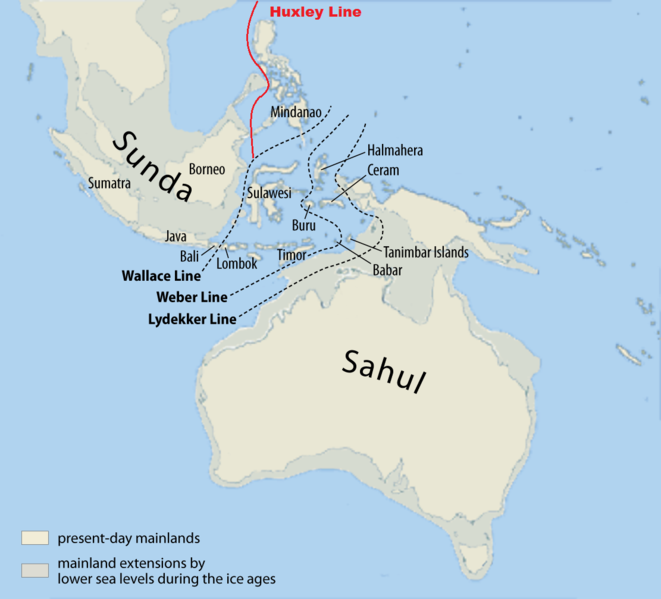
Figure 2. Australia and Indonesia During the Ice Age.[vi]
This leaves three viable possibilities for kangaroos getting to Australia. The first possibility is that Sunda and Sahul were closer together during the Glacial Maximum stage of the Ice Age when the sea levels were lower. The challenge with this theory is, while some continental spreading after the Flood is likely (e.g., Australia has shifted about five feet since 1994[vii]), moving these land masses close enough to create a land bridge when animals were living on both land masses is not likely, given the amount of energy involved in moving landmasses.[viii] However, it is still possible that there could have been shifts in the ocean floor’s elevations between the Indonesian islands and Australia due to earth movements, so the land bridge connection could have been more complete than otherwise portrayed.
The second possibility is that they floated across the Indian Ocean from Africa on a vegetation raft. In other words, they first migrated down to Africa, then when a river basin flooded some kangaroos got stranded on massive vegetation mats and got washed out into the Indian Ocean where the currents carried them across to Australia. There are currents that move in the right direction right across the Indian Ocean. If this seems too far-fetched, consider that evolutionists also rely on similar possibilities[ix] for explaining how animals got to Madagascar from Africa by the same mechanism, that is, by floating on vegetation rafts.[x]
The third possibility is that humans took kangaroos (and likely other animals) with them when they traveled to Australia by sea. We know this is how most domesticated animals (e.g., dogs) got to Australia, and this type of animal introduction has happened throughout history. In fact, this is how pigs, soybeans, kiwi fruit, wheat, honey bees, and all livestock except the American bison and the turkey got to North America.[xi] Humans have been documented transporting animals into various locations (including islands) for thousands of years. For example, consider the 4th Century mosaic in Figure 3 showing the transportation of non-native species in Italy (for hunting purposes).
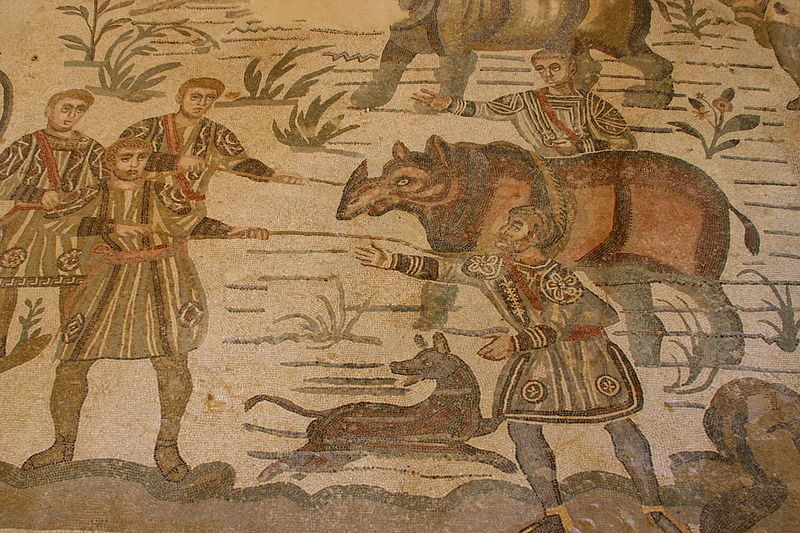
Figure 3. Villa Romana del Casale: Big Game Hunt Mosaic (Rhino) (Italy, early 4th century AD).[xii]
Secular scientists do not agree about how or when humans traveled to Australia. While the “by sea” theory has become widely supported in the secular literature,[xiii] this theory contradicts the secular worldview because scientists are troubled by the fact that Aborigines traveled so far by sea before such seafaring technology “developed.” The National Geographic’s Genographic Project[xiv] states, “About 50,000 years ago, a small band of humans landed in northern Australia, arriving on a primitive boat or raft. It is likely that the journey was planned because enough men and women arrived to found a new population there.” They continue, “Another mystery is what kind of water vessels early humans used to reach Australia. None of the boats used by Aboriginal people in ancient times are suitable for major voyages, and some have suggested early humans reached the continent on rafts made of bamboo, a material common in Asia.” From a Biblical perspective, however, people were “smart from the start.” They had the same aptitudes for building seafaring vessels that Noah had. Of course, the cumulative technology for ship-building advances faster with non-nomadic people groups. Ironically, there is growing academic support for the validity of the oral history of the Aborigines regarding traveling across land bridges that are now currently covered with water.[xv]
Lastly, let’s address the alleged challenge of the absence of a “kangaroo fossil trail” from where the Ark landed to Australia. This is not a legitimate challenge for two reasons. First, consider the conditions necessary for fossilization. Fossilization needs rapid burial and lots of sediment like Noah’s Flood provided. These mechanisms were not likely widespread areas across Indonesia after the Flood.[xvi] Consider that there used to be lions in Israel (based on historical records) and millions of bison in America. Where are all the fossils? There certainly aren’t many!
[i] National Geographic, “Animal Photo Ark: Eastern Gray Kangaroo,” Nationalgeographic.com: (www.nationalgeographic.com/animals/mammals/e/eastern-gray-kangaroo/?user.testname=none) (October, 2018).
[ii] Image credit: National Geophysical Data Center (NGDC) at NOAA. Image caption: “During the last Ice Age (above) sea level was at least 394 feet (120 m) lower than it is today (below), exposing much more area on the continents.”
[iii] Australian Institute of Marine Science, “Big Bank Shoals of the Timor Sea: An environmental resource atlas.” (2001): www2.usgs.gov/climate_landuse/glaciers/glaciers_sea_level.asp (November 5, 2018); K. Lambeck, Y. Yokoyama, & A. Purcell, “Into and out of the Last Glacial Maximum: sea-level change during Oxygen Isotope Stages 3 and 2,” Quaternary Science Reviews, vol. 21 (2002): 343–360.
[iv] See comments by: Jim Allen of La Trobe University, Australia and Peter Kershaw of Monash University, Australia; in: Straus, L.G. et al., Humans at the End of the Ice Age, Plenum Press, New York, London, 1996, p. 175;
reported by: Hancock, ref. 12, p. 56.
[v] S. Oppenheimer, Eden in the East, The Drowned Continent of Southeast
Asia (Weidenfeld and Nicolson, London, 1998): 147–148 (see Ref. 13).
[vi] Image Credit: https://commons.wikimedia.org/wiki/File:Map_of_Sunda_and_Sahul_2.png
[vii] Brian C. Howard, “Australia Is Drifting So Fast GPS Can’t Keep Up: A significant correction must be made by the end of the year for navigation technology to keep working smoothly.” (September 23, 2016). Nationalgeographic.com: https://news.nationalgeographic.com/2016/09/australia-moves-gps-coordinates-adjusted-continental-drift/?user.testname=none (Accessed October 24, 2018).
[viii] A.C. McIntosh, T. Edmondson, & S. Taylor, “Genesis and Catastrophe: the Flood as the Major Biblical Cataclysm,” TJ 14(1) (2000):101–109 (see pp. 106–107 and their Ref. 30).
[ix] Scientific American, January 1993, p. 90.
[x] Thanks to Dr. Andrew Snelling of Answers in Genesis for contributions to this section.
[xi] Pigs were first introduced in the 1500’s by Spanish Explorer, Hernando DeSoto. “In the centuries following European exploration and colonization of the eastern U.S., free-range livestock management practices and escapes from enclosures resulted in the establishment of wild pig populations and promoted their spread,” David Pimentel, Lori Lach, Rodolfo Zuniga, and Doug Morrison, “Environmental and Economic Costs Associated with Non-Indigenous Species in the United States,” College of Agriculture and Life Sciences, Cornell University (Ithaca, New York), June 12, 1999.
[xii] Image Credit: Wikipedia: “Rhino – Big Game Hunt mosaic – Villa Romana del Casale – Italy 2015.”
[xiii] Osborne, Hannah, “First Humans in Australia Arrived Thousands of Years Earlier than we Thought,” (July 19, 2017), Newsweek.com: www.newsweek.com/humans-arrived-australia-thousands-years-thought-638914 (Accessed October 24, 2018); See also: https://news.nationalgeographic.com/2017/07/australia-aboriginal-early-human-evolution-spd/?user.testname=none
[xiv] Genographic Project (Migration to Australia). Nationalgeographic: https://genographic.nationalgeographic.com/migration-to-australia/
[xv] Emily DeMarco, “Indigenous Australian stories reveal sea level rise from 7000 years ago,” (September 16, 2015), www.sciencemag.org/news/2015/09/indigenous-australian-stories-reveal-sea-level-rise-7000-years-ago (October 24, 2018); John Upton, “Ancient Sea Rise Tale Told Accurately for 10,000 Years: Aboriginal stories of lost islands match up with underwater finds in Australia,” Climate Central (January 26, 2015): Scientificamerican.com: www.scientificamerican.com/article/ancient-sea-rise-tale-told-accurately-for-10-000-years/ (October 24, 2018).
[xvi] Some areas, however, were subject to major Ice Age related flooding.

